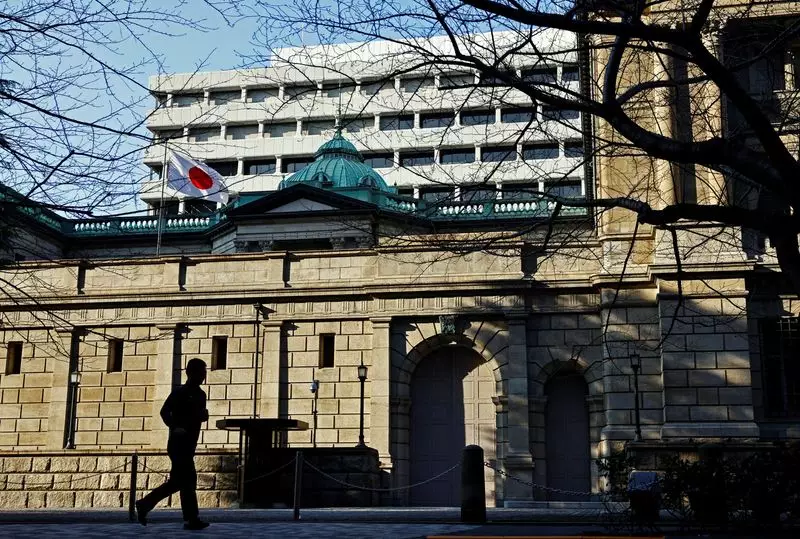With the nascent recovery of Japan’s economy and the specter of inflation hanging over the market, the Bank of Japan (BOJ) is on the brink of a significant policy shift. The impending decision to raise interest rates to a level not seen since the 2008 financial crisis is both pivotal and indicative of the central bank’s determination to navigate the complexities of a post-pandemic economy. This article delves into the implications of this potential rate hike, the surrounding economic conditions, and its possible repercussions on the global financial landscape.
A Contextual Backdrop
In recent years, the BOJ has maintained an exceptionally low-interest-rate environment to stimulate economic growth amid sluggish inflation and a fragile recovery from the pandemic. However, the latest economic indicators point to an urgent need for a recalibration of this approach. As inflationary pressures mount—driven by rising costs of goods and services—policymakers are grappling with the challenge of fostering sustained growth without triggering an economic downturn.
The impending decision to elevate the short-term policy rate from 0.25% to 0.5% reflects a cautious optimism among BOJ officials about the state of the Japanese economy. With inflation rates surpassing the BOJ’s target of 2% for an extended period, the central bank is tentatively edging towards a more aggressive monetary stance. Such a step could be positioned as a proactive measure to ensure that wage growth and consumption remain resilient amidst global uncertainties.
Market dynamics are shifting rapidly in response to the BOJ’s anticipated decision. Global stock markets have seen a rally, seemingly unfazed by geopolitical tensions, including tariff disputes and uncertainty surrounding U.S. economic policy. Traders are acutely aware of the critical juncture at which the BOJ finds itself, and sentiment among investors indicates a consensus that a rate hike is imminent.
Amidst these developments, Japanese government bonds have seen an uptick in yields as market expectations align with the BOJ’s potential policy adjustments. Additionally, the foreign exchange market has witnessed fluctuations with the yen’s performance, as traders respond to the evolving economic landscape. The BOJ’s decision could therefore act as a catalyst not just for domestic markets, but also for international trade and investment flows.
Strategic Communication and Forward Guidance
The BOJ’s communication strategy is evolving as well, with Governor Kazuo Ueda and his team providing forward guidance that seeks to prepare the markets for upcoming changes. By effectively signaling their intentions, the BOJ aims to mitigate market shocks and bolster confidence among investors. There is an acute awareness of the lessons from the past, particularly the market turmoil following unexpected policy moves.
An essence of this strategy involves not just announcing the immediate rate hike but also providing insights into the trajectory of future increases. Analysts anticipate that, should the rate rise proceed as expected, subsequent hikes could follow at a modest pace of around two per year, contingent on the economic trajectory of both Japan and its key trading partners, particularly the United States.
As the BOJ navigates this delicate balance of stimulating growth while curbing inflation, it is crucial to consider the broader global implications of its actions. A rate hike in Japan can have a cascading effect on global economic dynamics, influencing capital flows and currency valuations. Furthermore, a solid monetary stance may encourage consumer confidence domestically, potentially leading to increased spending and investment.
However, the timing of any subsequent hikes may be influenced by geopolitical factors—especially developments in U.S. economic policy under the Biden administration. The interdependence of these economies means that the BOJ may need to tread carefully to avoid unintended consequences that could derail Japan’s fragile recovery.
As the BOJ prepares for a potential shift in interest rate policy, the stakes are higher than ever. The upcoming decisions will not only shape Japan’s economic trajectory but also serve as a barometer for global market stability. While the path forward remains uncertain, the central bank’s commitment to adjusting its strategies in response to real-time economic signals is a step in the right direction. Navigating these complexities will require nuanced policymaking and astute awareness of both domestic conditions and global trends. The coming weeks will be critical in determining whether this bold strategic pivot can foster meaningful growth and stability for Japan’s economy.

